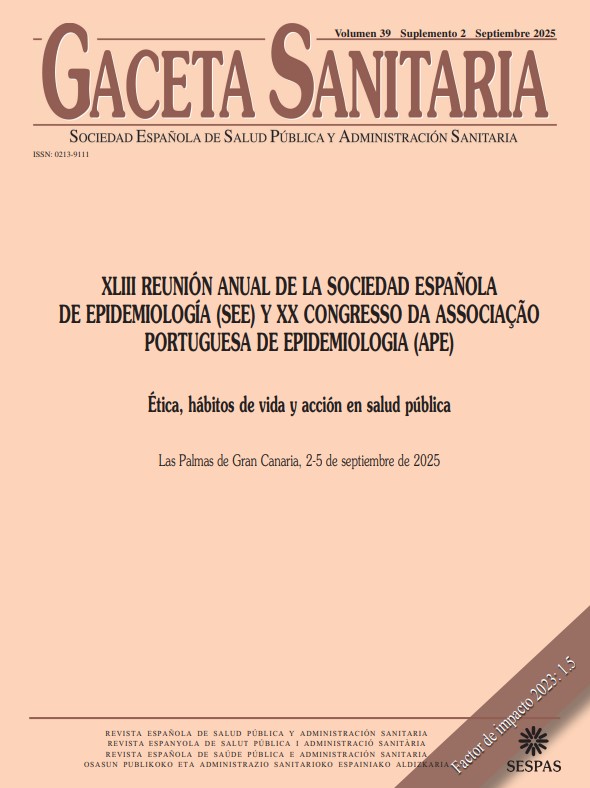581 - RISK FACTORS FOR NON-COMMUNICABLE DISEASES IN THE SOUTH OF QUITO, ECUADOR: A CROSS-SECTIONAL STUDY
Universidad Miguel Hernández; Instituto de Salud Pública-PUCE de Quito; CIBERESP.
Background/Objectives: Non-Communicable Diseases (NCDs) are disproportionately prevalent worldwide and specially in low-income environments, underscoring the urgent need for ecological prevention strategies over individual behaviours recommendations. We sought to describe the epidemiology of NCD risk factors by age and sex in a low-income urban district of Quito.
Methods: We conducted a cross-sectional study from November 2020 to October 2021 in Eloy Alfaro health district (17D06) in the South of Quito, Ecuador. We recruited 656 residents over 18 years old using a multistage geospatial sampling and implemented the expanded WHO STEPwise approach to surveillance of non-communicable diseases survey tool, to collect sociodemographic characteristics and information on behavioural risk factors. We measured height, weight, blood pressure and extracted blood to measure glucose and the lipid profile. Metabolic NCD risk factors were highly prevalent in this population.
Results: One-third of participants (33.2%, n = 188) were obese (BMI > 30), and more than half (56.9%, n = 322) had a raised waist circumference. Obesity was more frequent in women (38.7%, n = 148) than men (22%, n = 41, p = 0.000). Even in population aged 18-44, overweight and obesity was about 60% both in men and women. More than a quarter of the population had hypertension (26.9%, n = 153, 33% of men and 24% of women). Hyperglycaemia affected 7.9% (n = 45), increased with age and was higher among women (22% of women > 70 years old). More than half of the participants presented hypercholesterolemia (56.2%, n = 317) in general population and 40.3% in people aged between 18-44 (n = 95). Dietary risk factors such as low consumption of fruit and vegetables, high salt consumption and high sugar consumption were common (88.4%, n = 580, 33.2%. n = 218 and 72.4%, n = 475, respectively) with no significant variations by sex or age.
Conclusions/Recommendations: This study highlights the critical prevalence of NCD risk factors in a low-income urban district of Quito, emphasising the need for ecological public health strategies to promote healthier behaviors and reduce environments that induce illness. addressing the burden of behavioural and metabolic risk factors in the younger population is needed to avoid an alarming situation for the future.
Funding: ERC, programme Horizon 2020 (GA804761).















